Architectural Systems
Totalsim’s CFD Architectural Systems Services enables our customers to account for everything from HVAC to Pedestrian Comfort. We’ve streamlined the process of modeling complex physics of HVAC, Solar Loading and Pollutant Dispersion using customized CFD simulations. We easily visualize results helping you to evaluate and improve your designs. Explore our Architectural Systems capabilities below.
Building Aerodynamics
Totalsim Workflows in Computational Fluid Dynamics as a Building Design Tool:
TotalSim's vast experience in developing motorsports CFD technology has been leveraged to create architectural and building design workflows using complex CFD that create and test a digital twin of your design. The workflow capabilities listed below provide an overview of the areas TotalSim can help you explore and understand through the use of Star-CCM+ simulations in these complex challenges.
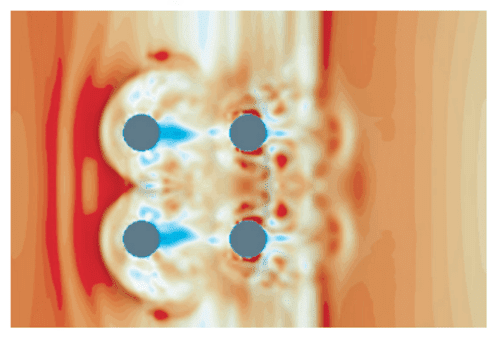
Benefits We Provide
Working with virtual modeling and simulation of fluid flows allows you to accelerate your design process using software such as Star-CCM+ or OpenFOAM. This reduces the number of physical prototypes and testing, while still evaluating all necessary conditions. Our engagement ranges from CFD consulting, to training, to customized workflows to meet your specific needs.
Whether you need wind loading data or are exploring pedestrian comfort or HVAC performance, our personalized simulations and apps provide valuable insight. Working with TotalSim will put you years ahead of the competition, while lowering your costs and optimizing your designs. Let us help you reach your goals efficiently and accurately.
Learn About Our Architectural Systems Capabilities
Building Design
CFD For Building Systems
Architects and civil engineers face the complex challenges of wind and its interaction with buildings and their surroundings. Our CFD building workflow help our customers to understand the following:
- Wind & Building Interaction
- Wind Loading
- Pedestrian Comfort
- Gust In and Around Buildings
- Wind Effects on HVAC Performance
- Determine the Depth of Buildings Foundations
- Manage Building Movements Through Liquid Damping Systems
- Find Optimal Location for Mechanical Voids

Occupant Comfort
HVAC
Controlling internal air flow and temperature is paramount for occupant comfort and are both directly impacted by HVAC layout and design. Our workflow for Thermal Comfort Management helps our customers to optimize HVAC systems and layout for thermal comfort. The following quantities can be investigated:
- Pressure
- Temperature
- Velocity
- Mean Age of Air
- Occupant Metabolic Rate, Body Size and Clothing Resistance
- Humidity
- Natural Ventilation
- HVAC
- Solar Loading
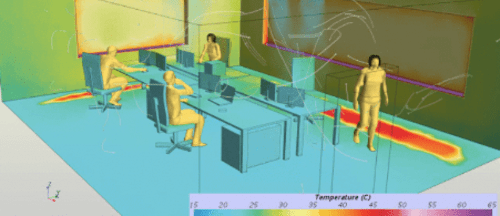
Odor Dispersion and Reduction
Exhausting and ingestion of contaminants can impact occupant health and comfort. Our CFD building workflow help customers to do the following:
- Assess Air Quality for Pedestrians or Occupants
- Assess Wind Through Stairwells and Associated Fire Risk
- Contaminant Transportation In and Around Buildings
- Evaluate Filter Performance
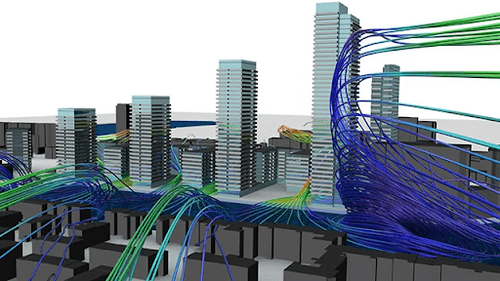
Noise Control and Reduction
Our proprietary workflow allows us to help you with the following:
- Capture the Aeroacoustic Sources
- Perform Spectral Analysis
- Identify Fields for Far-Field Noise Propagation
- Generation and Propagation of Noise in Ductwork
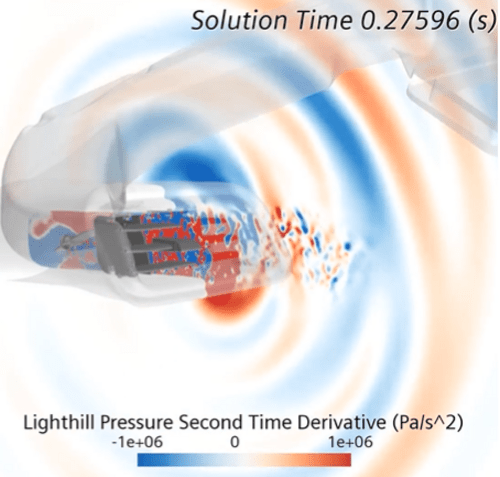
Solar Loading
This proprietary workflow will simulate the behavior of glass under solar load and calculates overall heat transfer through different mechanisms such as:
- Conduction
- Convection
- Grey Radiation
- Multiband Radiation
Our workflow includes capabilities for:
- Residential and Commercial Glazing
- Skylights
- Greenhouses
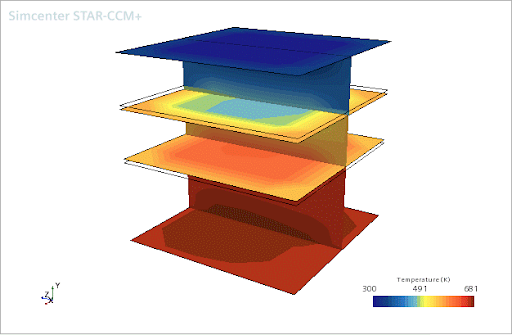
Healthy Buildings
Commercial Construction HVAC
Seasonal changes bring pollutants into rooms and require ventilation systems to keep the air quality healthy. Our CFD workflow helps our customers to accomplish the following:
- Assess Indoor Air Quality
- Avoid Discomfort for Pedestrians or Occupants
- Reduce Contaminant Transportation In and Around Buildings
- Evaluate HVAC Systems Performance
- Calculate Mean Age of Air
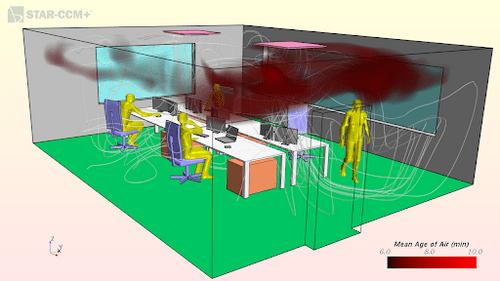
Substance/ Species Concentration
Totalsim substance and species workflow allow our customers to investigate dispersion or concentration levels of harmful gases and toxins. It also allows them to monitor the air quality around the built environment. We help our customers calculate the following:
- Specific Species Properties
- Concentration of Species in PPM
- Pollutant Particles Dispersion Reach
- Stagnation Areas Where Particles Accumulate
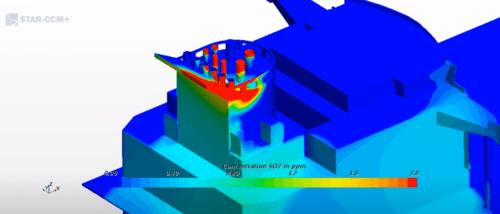
Pollutant Dispersion and Filtration
Totalsim's particle tracking workflow allows our customers to investigate the behavior of particles within the building and its subsystems. We help our customers calculate the following:
- Specific Particle Properties
- Selection of Injector Base on Particle Inlet Distribution
- Pollutant Particles Dispersion
- Stagnation Areas Where Particles Accumulate
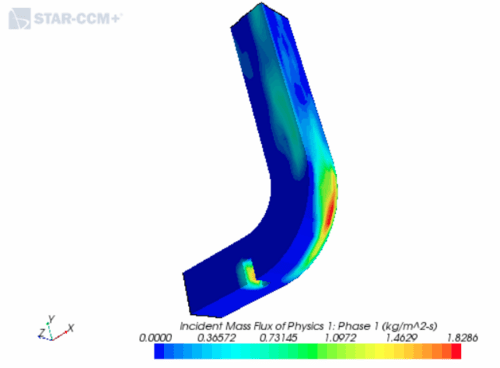
Smoke and Fire Propagation
Our workflow for fire and smoke propagation is an automatic tool for simulating building a fire.
It includes capabilities for:
- Fire Regions and Sources
- Soot Sources
- Ventilation
- Fire Doors
- Heat and Smoke Detectors
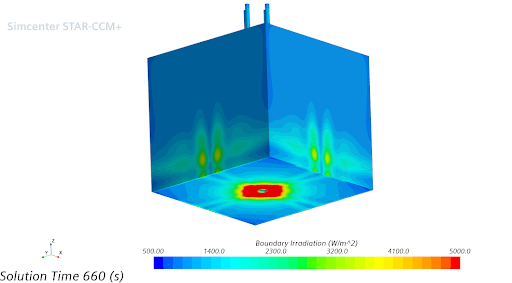
Building Equipment
Impellers and Blower Fans
Our workflow allows explicit modeling or simplified representations of fans and blowers including:
- Axial, Centrifugal and Impeller Modelling
- Swirl Effects
- Pressure Drop vs Flowrate
- Flow Distribution
- Blade Design and Optimization
- Noise Generation and Propogation
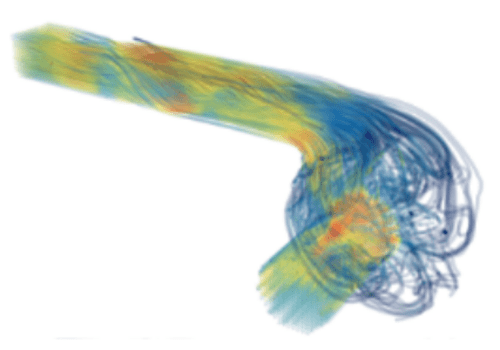
Water Pump
This workflow allows us to help customers to explicitly model their pump design and assess its performance. The full range of pump capabilities include:
- Optimize Casing Shape and Volume
- Optimize Impeller and Blade Shape
- Estimate Pump Efficiency
- Net Positive Suction Margin
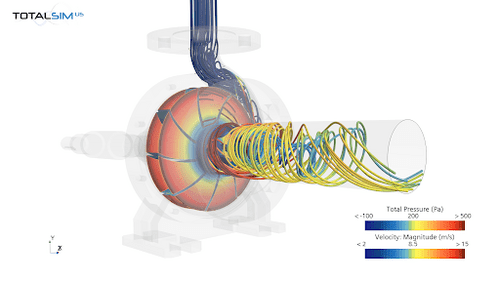
Heat Exchanger - Tube & Shell
Our workflow allows us to help our customers size, design and develop their heat exchanger layouts. Our workflow includes:
- Fin and Tube
- Shell and Tube
- Plate
- Micro Channel
- Phase Change
- Optimize Inlet and Outlet Locations
- Header Design
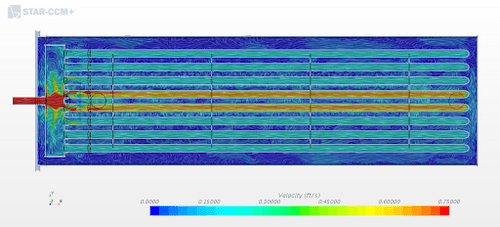
Ducting Systems
Our aeroacoustic HVAC duct workflow allow us to identify the source of noise generated by air flowing through the HVAC system and track its propagation into the occupied space.
Our proprietary workflow allows us to help you to design better and quieter systems.
Benefits:
- Investigates the Source of Noise
- Investigates the Aerodynamic Generation and Propagation of Sound
- Determine Sound Pressure Levels and Frequencies
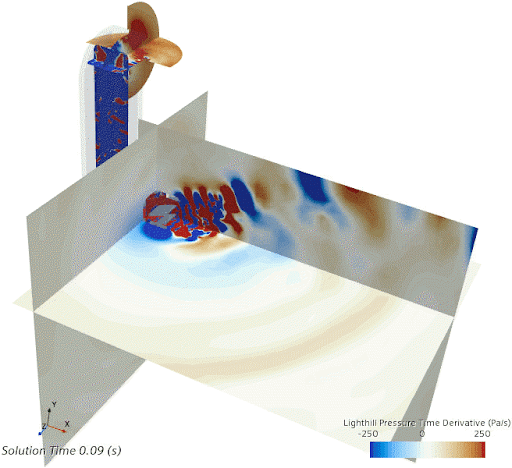
Louvers and Registers
TotalSim's workflow in StarCCM+ allows us to help customers with simulations of complex geometry like Louvers and Registers and calculate the following:
- Pressure Drop and 'K' Factors
- Determine Resistance Coefficients
- Honeycomb
- Demisters
- Filters
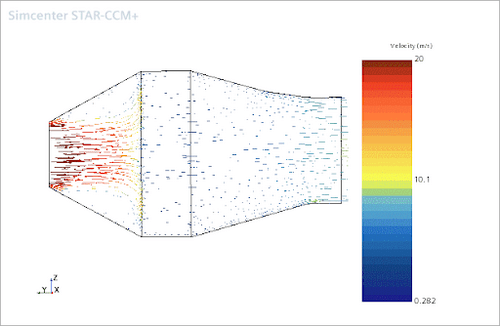
Combustion Air Heaters and Burners
Our workflow in StarCCM+ allows us to help customers with the flow and combustion of coal particles in a coal combustion.
Our workflow for complex coal combustion allows us to help customers calculate the following:
- Evaporation of the Moisture Content in the Coal
- Coal Volatile Formation
- Oxidation of the Remaining Char

Evaporative Coolers and Towers
Our Workflow is designed to optimize the performance of a cooling tower by solving the most common problems to upgrade thermal performance:
- Uneven Water Loading, as a Result of Overlapping Circular Nozzles
- High Water to Air Ratio Causes Poor Fill Performance
- Poor Water Distribution System Results in A Waste of Both Fan and Pump Energy
- Reduce Drift Loss, to Reduce Corrosion and Contaminants to Adjacent Equipment
- Fluid Film Fill to Quantify and Reduce Wall Water
- Evaporative Cooling- Forced or Natural Draft
- Nozzle Flow Optimization
- Pollutants Tracking out the Cooling Tower
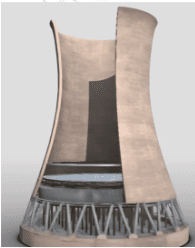
Cyclone Separator
Accounting for strong swirling motion around the wall of the cyclone is a challenging problem for CFD simulations. Our workflow is able to cope with these effects to predict an accurate performance for these devices. The most common problems being:
- Material Build-up on Cyclones
- Impeller Blockage
- Structural Damage
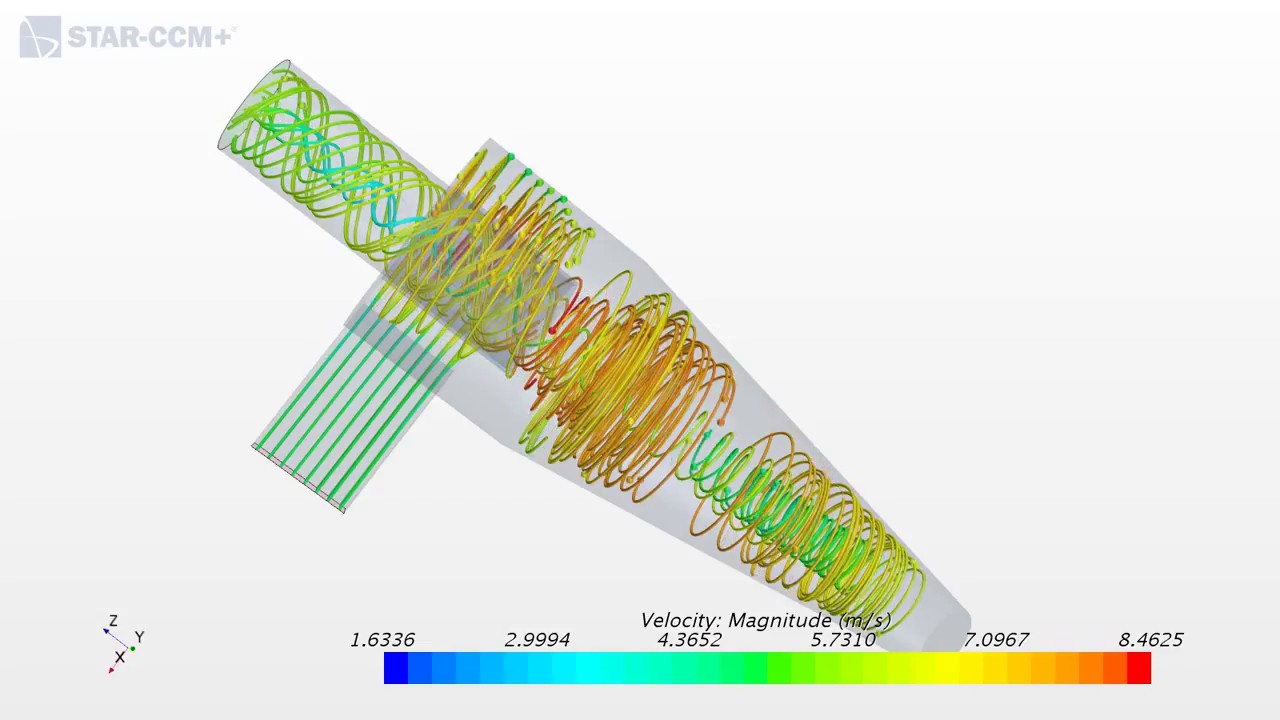
Find out how you can save time and money with TotalSim's Architectural Systems CFD services.
"*" indicates required fields
